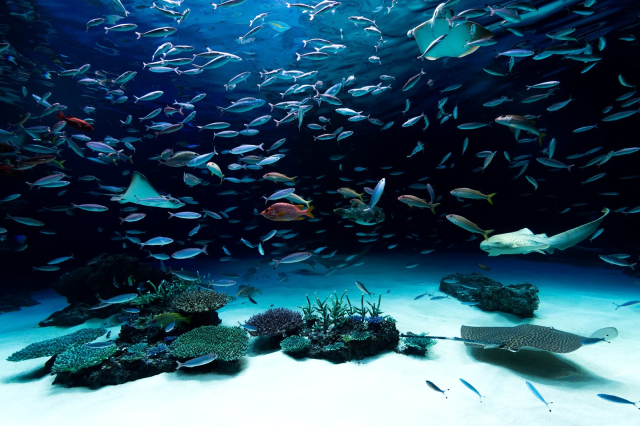
Staff says it takes the audible appreciation of its residents’ imagined flavor as a compliment.
If you walk around a Japanese aquarium, there are a few words you’ll definitely hear people saying. “Kawaii!” (“Cute!”) is pretty standard wherever the clownfish or Clione congregate, and you’ll also hear “Kirei…” (“Beautiful…”) whispered about the more majestic or colorful species of aquatic life.
Eventually, though, you’ll hear someone announce “Oishi sou!,” or “That looks delicious!”
Japan is home to the most enthusiastic seafood fans on the planet, which means there’s a lot of overlap in the list of species found in aquariums and the ones on restaurant menus. Aside from fish like sea bream and sardines, many Japanese aquariums are also home to crab, squid, and octopus, all much-loved delicacies in Japan.
But how do employees feel about some guests looking at their aquarium’s residents and imagining eating them? It probably varies by location, but the staff at Asamushi Aquarium in Aomori City has put up a sign telling everyone that they don’t mind a bit.
On a recent visit to the aquarium, Japanese Twitter user @muk0jima snapped a photo of the sign, which starts with the question “Is it OK to say ‘They look delicious’ about the fish in the aquarium?”, to which the staff’s response is:
“Sure.
If the fish look delicious, it’s a sign that they’re healthy and being well-cared for, so for those of us who work at the facility, we take it as a compliment.
Here at Asamushi Aquarium, we want people to know about the deliciousness of fish as well. If animals are delicious, people will want to be able to continue eating them, and so they’ll support measures to ensure the species continues too.”
However, some might worry that this sort of “protect the things you love (to eat)” mentality could lead people to forsake less tasty forms of life. “So does that mean people can forget about protecting species we don’t eat?” reads a follow-up question on the sign, to which Asamushi Aquarium replies:
“That’s not the case. We have to protect those species too.
For example, we humans eat sea bream, a big fish. But the sea bream gets big by eating small fish, crabs, and worms. The small fish and crabs eat worms too.
We don’t really think of worms as food for humans, but without them, the sea bream won’t be able to grow. So in order to protect delicious species of fish, we have to protect all sorts of other species too.”
As a further sign of its commitment to educating visitors about the food chain, another Twitter user, who visited Asamushi Aquarium last month, posted this photo of a wall display of various seafood dishes, including grilled miso clams and scallops, which in Japan can be enjoyed fried, in miso soup, or raw, as sashimi.
However, it’s probably best to bear in mind that while Asamushi Aquarium itself has no objection to you calling their fish delicious-looking, some of your fellow guests might not share that opinion. Right next to the explanation @muk0jima photographed is a picture of a family with the dad saying “Those mackerel sure look tasty!”, which has his daughter calling him a “meanie” and his wife angry at him for upsetting their child. So as mouthwatering as they may look, it’s still best to consider whether or not the people in earshot might be thinking of the aquarium’s fish as their animal friends, and instead of voicing your culinary appreciation, silently redouble your inner resolve to go to a sushi restaurant on the way home.
Source: Twitter/@muk0jima via Jin
Top image: Pakutaso
Follow Casey on Twitter, where he almost always craves sushi after visiting an aquarium.